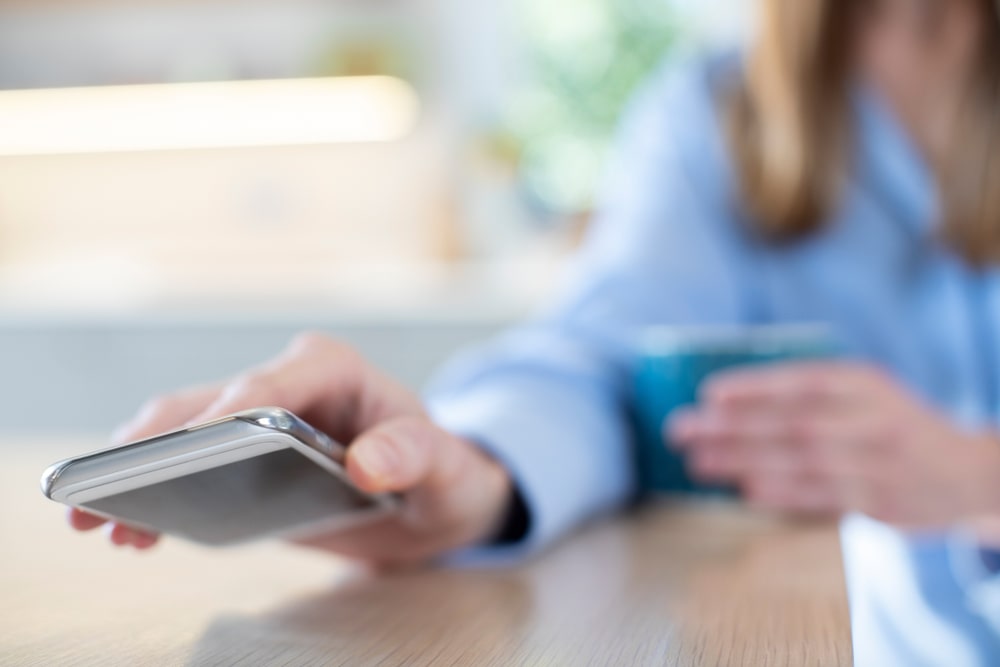Disclaimer: Virgin Pulse and HealthComp are now Personify Health
While your phone might feel like an extension of yourself, what once started as a form of communication has evolved into a source of entertainment and distraction that is having negative (and shocking) impacts on our personal & professional lives.
- The average American checks their phone once every 12 minutes
- A typical cell phone owner will unlock their device at least 150 times a day
- An average American spends 5 hours and 24 minutes on their mobile device each day
- Less than 5% of Americans spend less than an hour on their phone per day
All this screen time, distraction, and time hung up on our cell phones is posing dangerous effects on our health. In fact, too much screen time can cause trouble sleeping, increased symptoms of depression, mood changes, and altered brain chemistry, and cause users to tune out of the present.
How to participate and tips for success:
The goal? We want to help give you perspective on how much time you spend on your phone daily and the things you might be missing in front of you.
Here are four tips on how to prepare and have a successful 24-hour cleanse:
- Set your phone on “Do Not Disturb” mode or put in a different room/inside a bag. Out of sight, out of mind.
2. Update your teams status and warn people where you’re going. Here’s an example message you can use:
Today, I am taking care of my wellbeing by disconnecting from my cell phone as part of Personify Health’’s “Hang Up and Hang Out” challenge. I’ll have my cell phone available for urgent communications but can be best contacted through Teams or email today.
3. Plan. Decide how you’re going to have a successful day without your phone, outside temptations, etc. And prepare to use your phone solely as it was an intended: a method of communication.
4. Create a phone-less community. Invite your friends, family, and peers to join you. You’ll spread the benefits of less screentime and get an accountability partner in the process.
In embracing the no phone challenge, you are taking a bold step toward reclaiming your attention and decompressing from the digital noise that dominates our daily lives.
You’ve got 5 hours back in your day… Now what?
Here’s are 10 ways you can fill you day with non-screen related activities:
- Explore and be present with your thoughts. Take a walk with a buddy, listen to nature, and see something you haven’t seen before. You might be surprised at how much you’ve been missing.
- Jam out. Listen to music, dance in your kitchen, or throw on a record.
- Journal and reflect. Here’s a list of 30 journaling prompts from Silk & Sonder
- Eat without the distraction. Cook a meal that’s a little more complicated than your usual recipe, support a local restaurant for dinner, or take your meal on-the-go with a picnic.
- Be intentional with your circle. Catch up with a neighbor, host friends over—really socialize and connect with your people.
- Get a natural boost of your brain’s feel-good chemicals with exercise.
- Catch up on the sleep you might have been missing from the harmful blue light.
- Complete that looming home project. Clean out the closet, deep clean your room, or reorganize/rearrange your office space.
- Pursue your passions without the fear of failure (or the excuse of “I don’t have enough time.”)
- Book time for wellbeing this month with our June Wellbeing Calendar.
When you participate in a no phone day challenge, you actively create space for yourself to engage with the world around you, free from the constant pings and buzzes that demand your attention.
How to disconnect from the digital world more regularly.
You might be eager to purge on what you’ve missed in the 24 hours being off the grid. But if you’re feeling refreshed from your time unplugged, here are some ways you can do this more regularly:
- Set boundaries (metaphorically). Make a promise to yourself of when you will and won’t use your phone. For example:
- I will not use my phone at the dinner table.
- I will only use my phone for an hour after work.
- I will turn off notifications for social media.
- I will not use my phone when I am in the presence of family, friends, or coworkers.
- I will put my phone down when someone is talking to me.
- I will put my phone down when someone is talking to me.
2. Set boundaries (physically). Go into the settings on your phone and set daily limits on screen activity. You’ll get reminders when you’re approaching your limit and have hit your daily max.
3. Limit temptations. If there’s an app on your phone that you find yourself reaching for the most, delete it from your home screen or off your phone completely.
